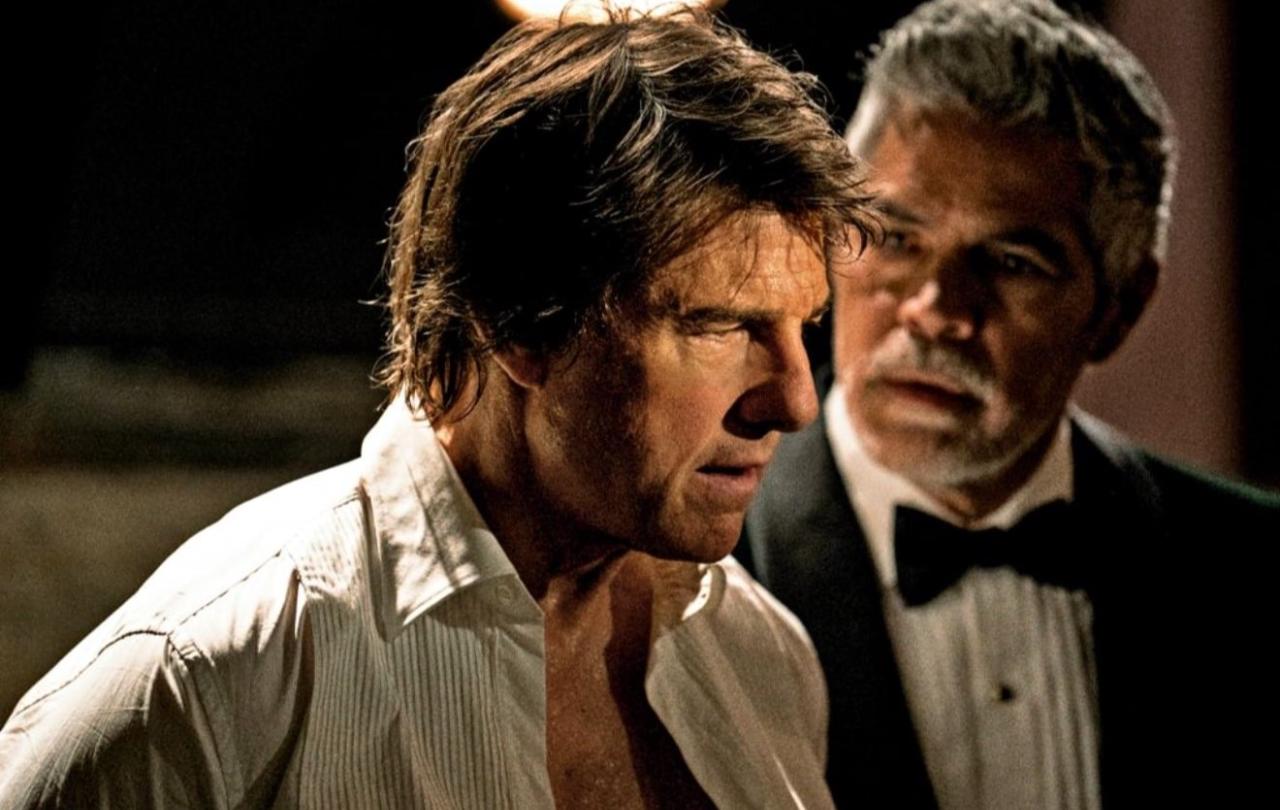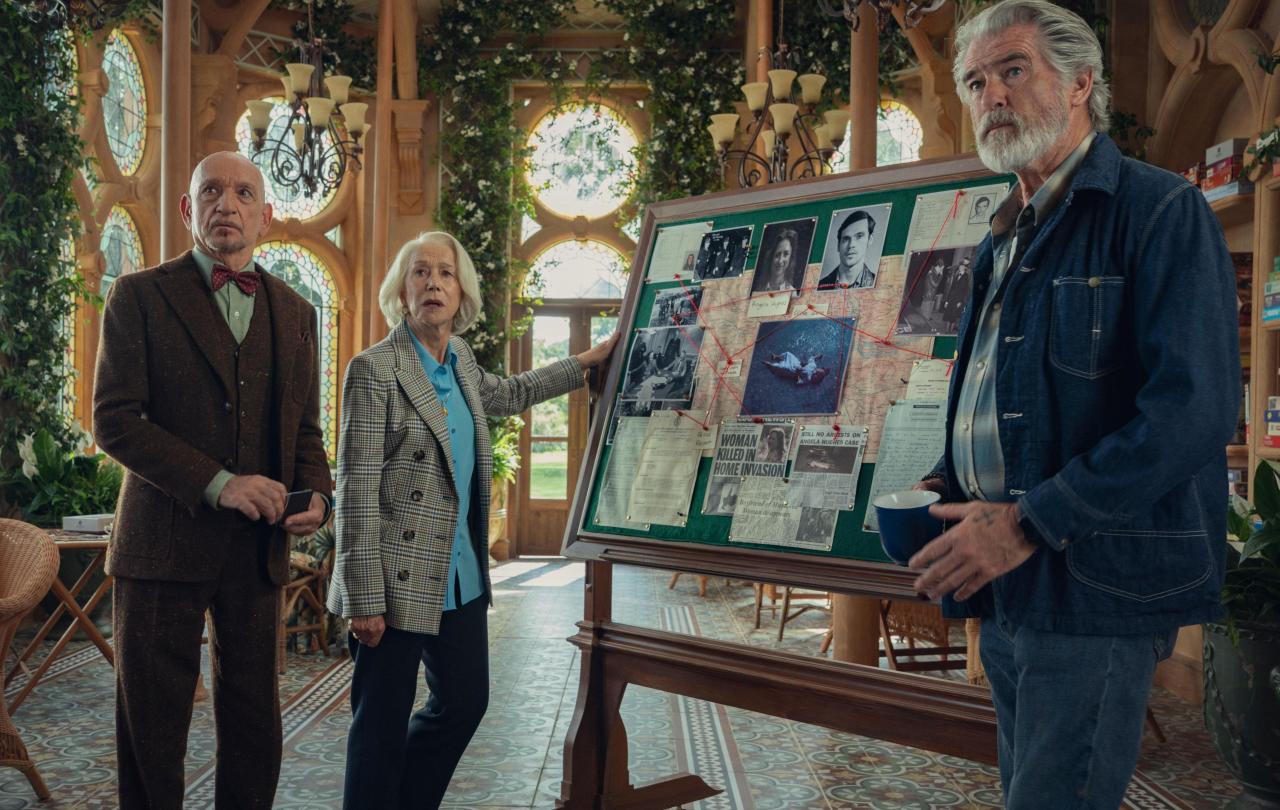
Is this the FINAL reckoning? I’m not sure. I hope so. There has been speculation whether Tom Cruise will reprise his role as Ethan Hunt in further franchise instalments. He has expressed interest, while also suggesting that the use of the word ‘final’ is purposeful and indicative. Let us all pray that he’s being honest. I mean…he must be exhausted. The stress and strain, the pressure and pain, that he puts his body through for every Mission Impossible film is approaching elder abuse – he is 62 after all.
In a departure from tradition, Mission Impossible: The Final Reckoning is an immediate sequel to Mission Impossible: Dead Reckoning, which released in 2023. The series which has thrived on a formula of releasing stand-alone spy stories, allowing us to enjoy familiar characters in new scenarios, has decided to make a two-parter…although you wouldn’t know it. You don’t need to have seen Dead Reckoning to pay your money to watch Final Reckoning, as the script assumes you’ve not only missed the immediate prequel, but have never viewed any other Mission Impossible film.
Goodness me, the film is plodding. It begins with a message from the President (Angela Bassett), delivered to Cruise’s super-spy Hunt. In previous instalments such messages have been a punchy way to set the stakes, roll the pitch, and then give the rest of the screen time over to remarkable action set-pieces. On this occasion we have an interminably long, and irritatingly portentous, monologue detailing why Ethan Hunt is the best of spies, the best of men, and essentially MI Jesus. The only man who can save the world from a literal apocalypse.
The premise of the film is that the malevolent, power-hungry AI known as ‘The Entity’ (could no one have thought of a better name, REALLY!?), which Hunt failed to stop in the previous film, is now at large and tipping the world towards destruction. It is manipulating the media, gaslighting governments, and slowly infiltrating the nuclear arsenals of the world, all in preparation to annihilate most of the human race in a nuclear holocaust. It then plans to rule the remaining vestiges of humanity and create a new utopia for itself. Only Ethan Hunt can stop it…just as long as he convinces world leaders to trust him, finds the nuclear submarine where ‘The Entity’ originated, defeats hundreds of bad guys, and infiltrates a top-secret bunker in South Africa.
We’re a world away from the lean and mean story of the first MI, where we only had the identities of CIA assets at stake!
Its rubbish. Genuinely rubbish.
The script is ripe. Nay! It is overripe. NAY! Burn the whole house down, because the brie has grown limbs and the fruit bowl is plotting your death. Every other conversation involves either Cruise pontificating on how the only way to defeat ‘The Entity’ is love and trust and the age of Aquarius, or someone explaining to Cruise how this mission is his destiny, because only he is good and pure enough to succeed. He’s MI Jesus, and it’s ridiculous.
The film plods and plods and plods. The whole point of this franchise is to provide the viewer with regular, breath-taking action, and yet the first hour-plus is a litany of exposition and call-backs. Ethan travels to several European capitals, for about thirty seconds apiece, before formulating his plan. This is confusing and jarring, but to add to this pain, the audience is tortured with disorienting, quick-cut montages of Hunt’s previous adventures. The plot seems to be determined to link this final, world-ending catastrophe to his past escapades…except MI2…no one has love for that.
Unfortunately, all these positives are packaged in such a self-aggrandising and cack-handed manner as to be rendered inert.
By the time the action really kicks in I was exhausted and in no mood. This is a shame, because the action is truly spectacular. A long sequence in a submarine – which is both well below safe diving depth, but is also slowly falling of an underwater cliff. A breath-taking fight between two biplanes. Gunfire galore. I recognised its brilliance on an intellectual level, but enjoyed none of it. I was too damned bamboozled by over an hour of nonsense beforehand.
The performances are fine. Cruise is the last remaining true action star, putting himself through a gruelling regimen to ensure he performs his own stunts. This shows on the screen and is very much appreciated and commendable. Simon Pegg returns as Benji to provide the comic relief. Ving Rhames’ Luther has a brief appearance which is bitter-sweet and lovable. Henry Czerny and Rolf Saxon are delightful additions – the only call-backs to the first film which don’t irritate, and actually elevate the film.
Mission Impossible: Final Reckoning is fine. It is serviceable. It delivers the heart-stopping thrills. It has timely theme: of what true humanity and human relationship is in a world dominated by AI, technology, simulated reality, and simulated interaction. This is all good. Unfortunately, all these positives are packaged in such a self-aggrandising and cack-handed manner as to be rendered inert. For a film whose story serves as an (admittedly histrionic) warning about the dangers of AI, it plays out as if designed by chatbot.
The Mission Impossible films have always been a vehicle for Tom Cruise. This has been their greatest strength – he is the last true movie star after all, and we may never see such a charismatic and powerful screen idol again. This has also been their greatest weakness. What a shame this only became apparent in the (potential) final outing.
2 stars.
Celebrate our 2nd birthday!
Since Spring 2023, our readers have enjoyed over 1,000 articles. All for free.
This is made possible through the generosity of our amazing community of supporters.
If you enjoy Seen & Unseen, would you consider making a gift towards our work?
Do so by joining Behind The Seen. Alongside other benefits, you’ll receive an extra fortnightly email from me sharing my reading and reflections on the ideas that are shaping our times.
Graham Tomlin
Editor-in-Chief





